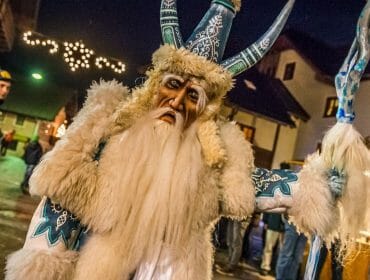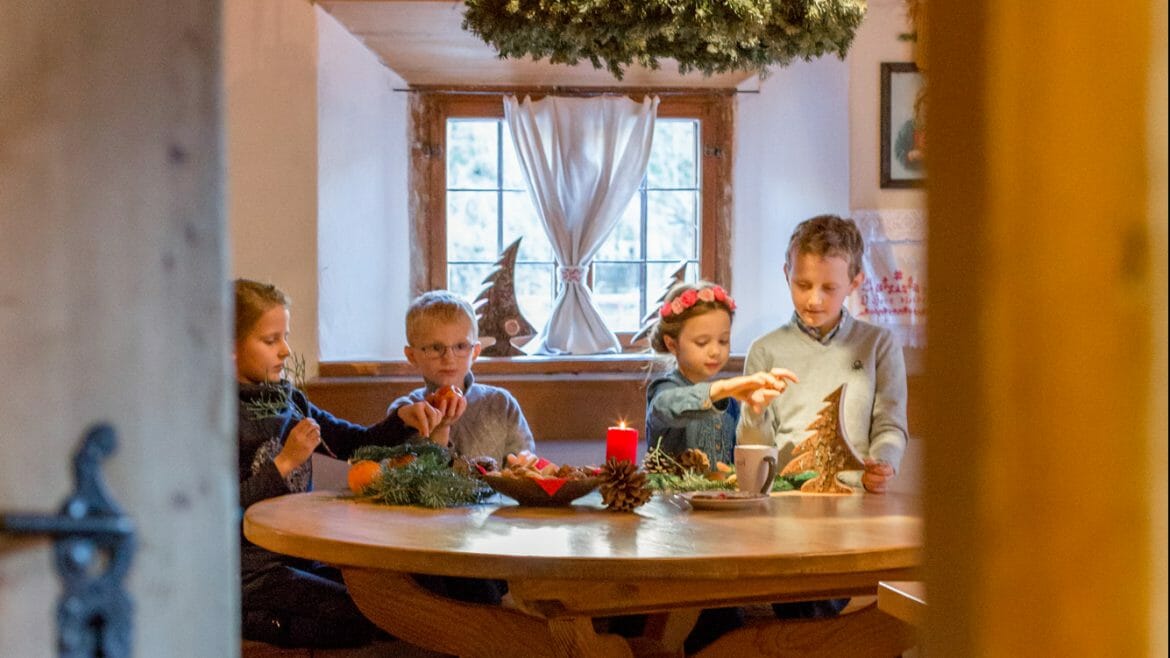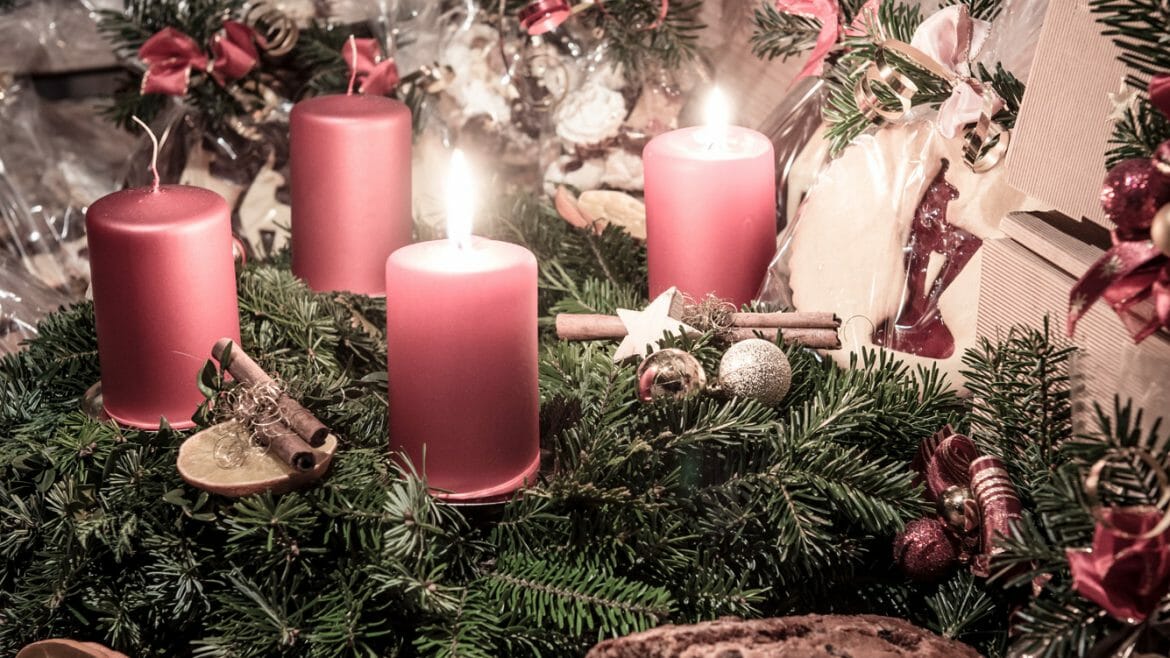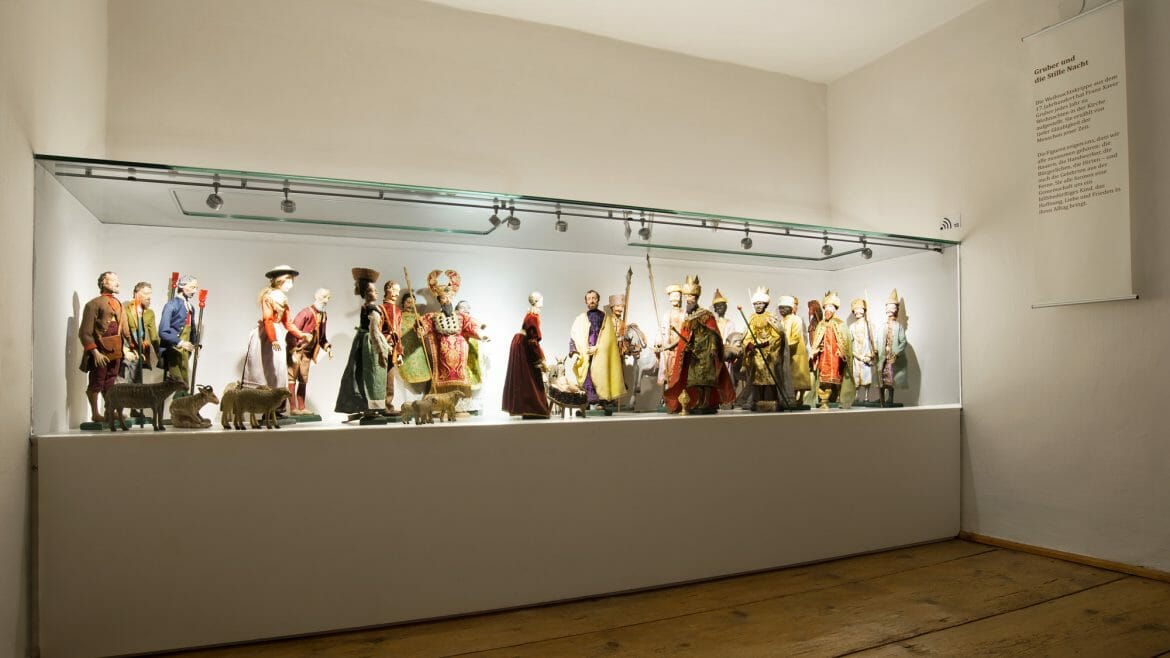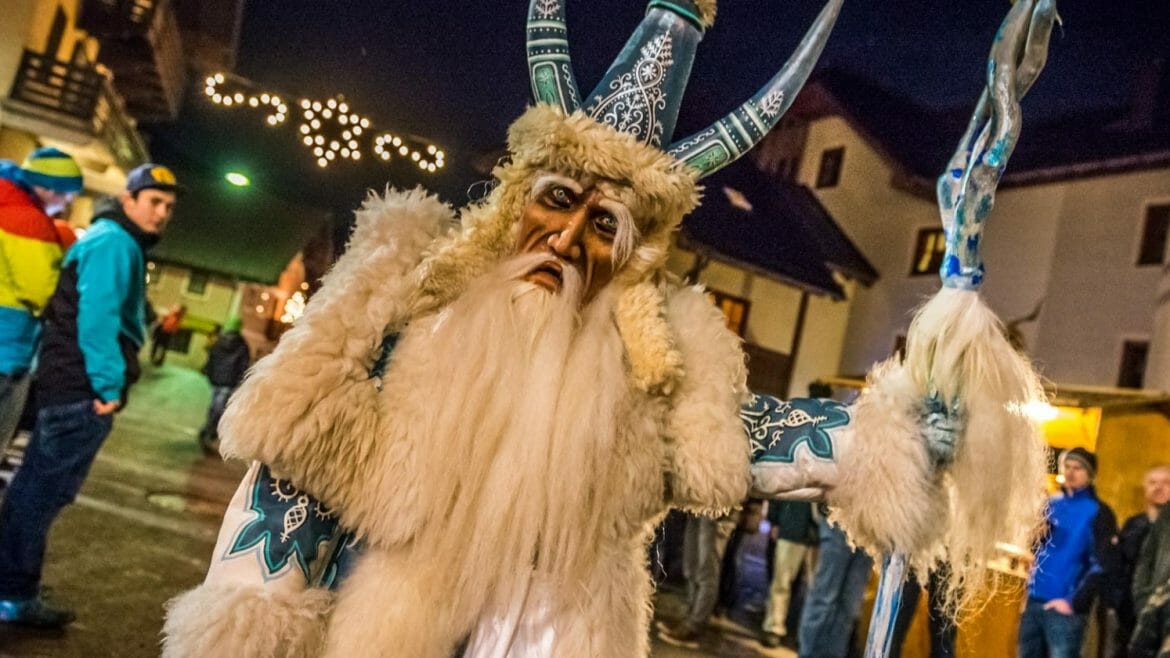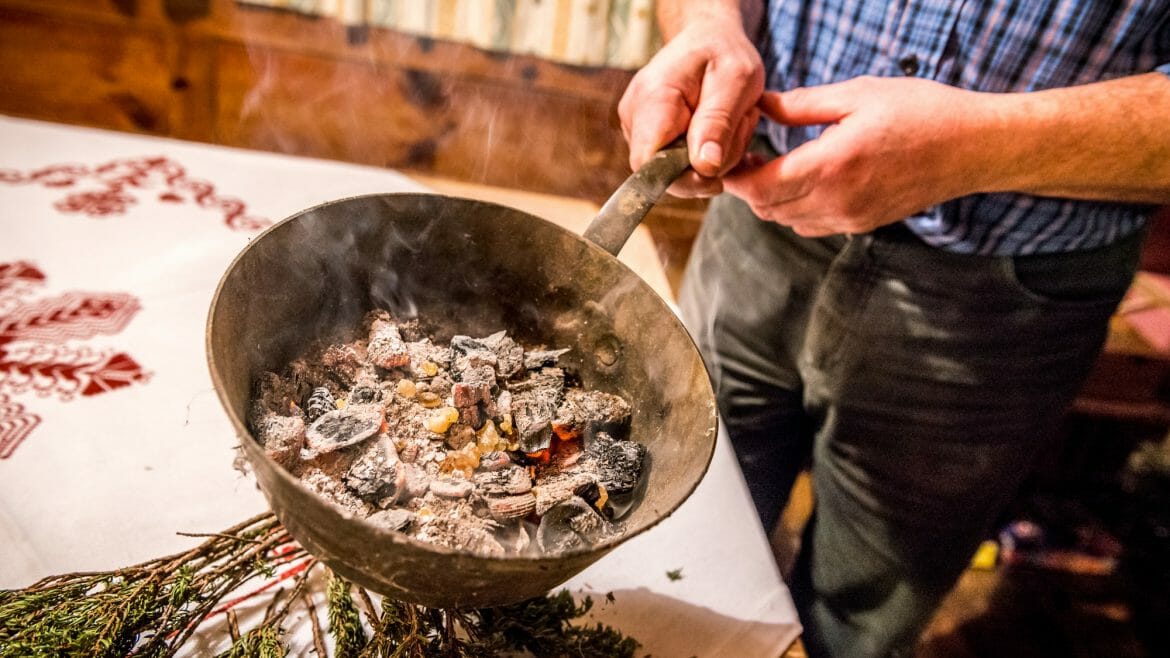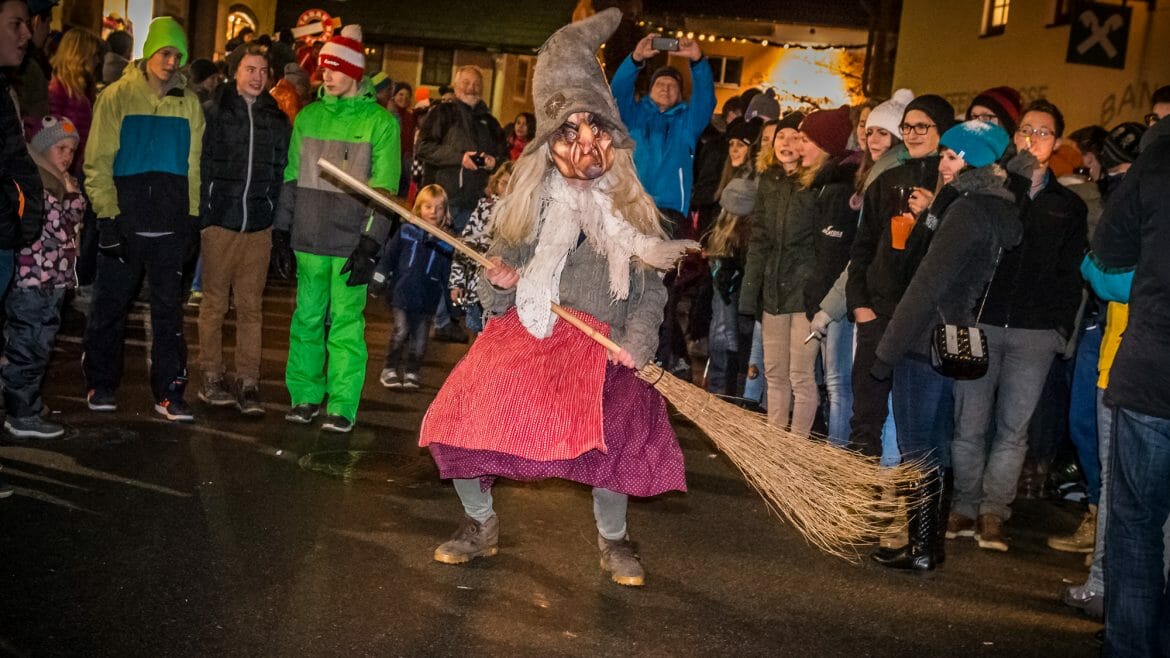Waiting for the Christ Child – wonderful Advent season
The first Sunday of Advent in the land of “Silent Night” traditionally marks the start of a reflective time. While friends meet at Christmas parties and Christmas markets, families pay attention to ensure that alpine customs are preserved. During Advent, the Advent wreath, which is made of fir branches, is a faithful companion. The word Advent is derived from the Latin term “adventus” – arrival. It is about pausing and reflecting, but also about preparing for Christ’s birth. In the land of “Silent Night”, this is done with special festivities and customs – many of them handed down from the generations while others have been added over the course of time.
- On 4 December, St. Barbara’s Day, many families bring cherry branches from the garden into the flat or house. As the patron saint of the miners and in her representation with a tower and sword, St. Barbara has an important importance in the land of Silent Night, where salt or ore was mined in many places. If you are lucky, the branches open up by Christmas, which in turn is interpreted as a sign of luck and fertility.
- The Steinbach Advent Calendar in Steinbach an der Steyr in Upper Austria has been open every year. From 1 to 24 December, on the village square, a festively decorated Christmas window is opened each day.
- The Christmas tree dunking in Gmunden am Traunsee, in Schärding am Inn, in Schörfling am Attersee or at Mondsee lake is a relatively young custom, which has its origin in Upper Austria and is now very popular throughout Austria. Christmas trees are sunk in the water in order to be lifted from the lake again by divers during Advent celebrations – beautifully illuminated.
- On the first Sunday of Advent in the Silent Night town of Hallein, things are cool and fresh: Torches and a lit wooden star accompany the swimmers into the cold waters to drift along the Salzach River through the historic old town.
A visit by St. Nicholas und Krampus
Advent is a wonderful time especially for the children. When the first snow falls from the sky, sleds and skis are fetched from the cellar. A letter is written to the Christ Child and placed in the window, in the hope that it will fulfill all wishes. Together, biscuits are baked, Christmas carols are sung and stories are read. And from time to time, someone will stand at the door who will give you the chills: Krampus – as a companion of St. Nicholas.
The 5th of December is the much feared Krampus day in Upper Austria, Tirol and SalzburgerLand. It is the eve of St. Nicholas day. With the dull sound of bells, the Krampus characters roam the streets wearing goat horns, sheepskins and carved masks. They are the dark companions of St. Nicholas, who enquires as to how obedient the children had been that year. The good children are given gifts, the naughty ones punished. This is the tradition. Luckily, the reality is quite different: A St. Nicholas bag filled with candy, peanuts and mandarins is handed to each child. In the country villages, St. Nicholas moves from house to house with his entourage, but there are also large, organised Krampus or Perchten runs.
Special tips for SalzburgerLand:
- The “Wild Hunt of Untersberg” takes place on the 2nd Thursday in Advent. According to the saga surrounding the god of wind and death, Wodan and his army of war wreaked havoc in the area around Untersberg. Then the “Wild Hunt”, consisting of death, the witch, Habergoass and figures from the Untersberg sagas such as Moosweiberl, Saurüssel and Bear, meet in a secret place to then go from farm to farm. There they are loud, shout and dance to drumming and whistling. The Grödig Tourism Association can tell you where exactly the “Wild Hunt” meets up.
- At noon on the 24th of December, the Salzburg people loudly welcome the Christ Child (‘Christkind’). During the traditional “Christ Child shooting match”, the fortress marksmen meet on the Kuenburgbastei. The festive shooting from Hohensalzburg fortress can be traced back to the baroque period.
A “Kripperlroas” through SalzburgerLand leads, amongst other places, to the Nativity Set Exhibition in Salzburger Heimatwerk or to the Salzburg Christmas market, to the Museum Schloss Ritzen Saalfelden, to the Grossarl Valley or to Mariapfarr. The Christmas nativity set here with around 100 restored figures from the time when Joseph Mohr wrote the lyrics is a real attraction.
- The Nativity Set Association Salzburg and its local groups offer nativity set workshops for adults. In Saalfelden – the home of the world-famous Salzburg nativity set builder Xandi Schläffer – the legendary “Saalfeld nativity set” is recreated every year by students. Each set is a small piece of art in its own right: the nativity sets resemble rustic mountain huts or small farms.
“Anglöckler” reminds you of hotel stays
Also in Advent, the “Anglöckler”, “Anklöpfler” (Tirolean) or sage blowers are on the doorstep: Small groups of singers, dressed as shepherds, move from house to house symbolically following the pastoral visits of Joseph and Maria. They ask for admission, sing songs and tell little stories. Their knocking on the door is meant to evade evil and bring blessings and happiness to the new year. This custom goes back to an old tradition: In former times, the many farmhands on the farms were dependent on small donations from neighbors to survive the winter. Today, the “Anglöckler” is granted entrance almost in every house. They are fed and given gifts, and then go outside into the night.
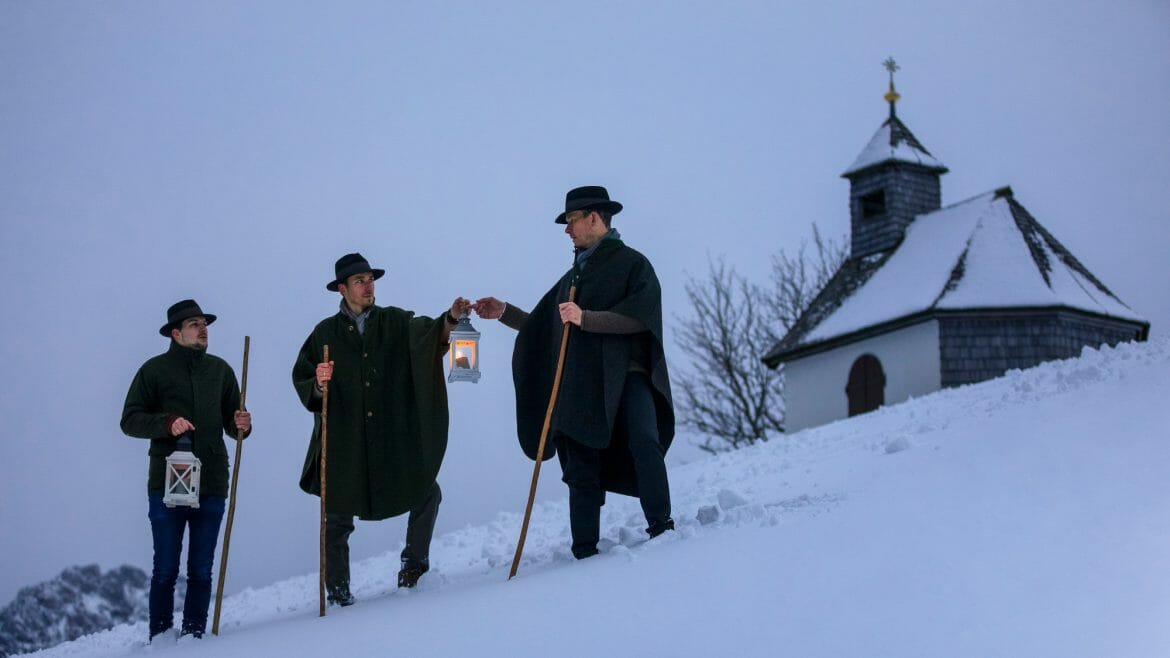
(c) SalzburgerLand Tourismus, Anglöckler
Kripperl and Christkind
A particularly beautiful custom in Advent is the “Kripperl” (nativity set) viewing. Nearly every church has one on display. The scenery and the representations in the nativity set change from week to week and stimulate the children’s imagination. In addition, they build a bridge between the Christian faith in the incarnation of God and the “Christkind” (Christ Child), who ensures that Christmas presents are placed under the tree.
February 2 (Candlemas) marks the end of the Christmas and nativity set calendar, both in the churches and private homes. The Christmas trees traditionally also often remain in the living rooms until this day. Since the 18th century, it has been customary to place small nativity sets in the home.
A special time between Christmas and Candlemas
There is hardly as much mysticism and magic in the air as around the Christmas period. When the nights in the Alps are particularly long and the days are particularly short, the light is reborn. Traditional customs have been handed down from generation to generation and are now as authentic as they were hundreds of years ago to protect the farms, homes and livestock, for a rich harvest in the new year, happiness, peace and health. At Christmas, people bring a piece of nature into their own four walls with a Christmas tree. It is decorated with balls, beeswax candles and sweets. The mystical Twelve Days between the winter solstice on 21 December and the Epiphany on 6 January is kept alive archaically. According to legend, during these nights, the female Percht, a type of Alpine goddess, roams with her wild entourage. She is considered to be the protector of women, and especially single mothers.
- A particularly beautiful custom is the distribution of the light of peace from Bethlehem on 24 December. The peace flame is brought from Bethlehem every year by a child from Upper Austria – where the custom has its origin – and brought to Vienna. Throughout Austria, the flame can be picked up at stations, churches, ORF country studios, etc. Trains bring the peace light from Austria to many European countries.
Smudging during the Twelve Days
The Twelve Days have attracted plenty of legends and superstition. During these nights, for example, laundry should never be allowed to dry. It can also be used as a weather forecast for the next twelve months. On these nights, the ancient custom of smudging with incense, tree resin, and dried herbs is practiced, as a farmer from the Lungau region describes: “We go through the house with the smoking tray, across the yard, through the stables, and ask for protection and blessings in the new year. On Christmas and New Year’s Eve, we sprinkle with holy water and pray the rosary.”
Perchten runs in the Alps
Organised Perchten runs – there are pretty and ugly Perchten (Alpine mythical goddesses) – are held at the beginning of the year in SalzburgerLand as well as in Upper Austria and Tyrol. For instance, the Trester in Stuhlfelden in the Pinzgau reagion are considered the pretty ones who dance, sing and dance for fertility. In many Tyrolean places, elaborate percussions such as in the Tyrolean lowlands with fire performances and terrifying figures are organised. The disguised men wear carved masks and bells as the Perchten are meant to drive away the evil winter spirits.


